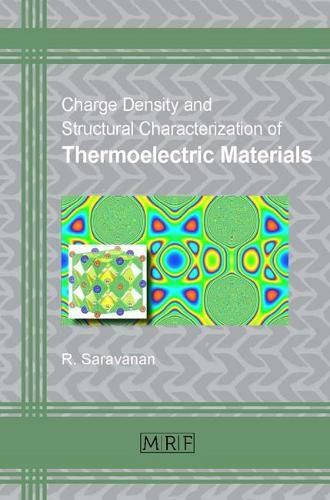Readings Newsletter
Become a Readings Member to make your shopping experience even easier.
Sign in or sign up for free!
You’re not far away from qualifying for FREE standard shipping within Australia
You’ve qualified for FREE standard shipping within Australia
The cart is loading…






This title is printed to order. This book may have been self-published. If so, we cannot guarantee the quality of the content. In the main most books will have gone through the editing process however some may not. We therefore suggest that you be aware of this before ordering this book. If in doubt check either the author or publisher’s details as we are unable to accept any returns unless they are faulty. Please contact us if you have any questions.
Thermoelectric materials permit the direct conversion of temperature differences into electric energy, and vice versa. They are therefore of highest technological interest in applications such as solid state coolers, waste heat recovery, sensors and detectors, and power generators including remote power generation.
Thermoelectric materials are often called environmentally green , and for good reasons. Not only can they help generate electrical energy from waste gases as they are generated in such processes as home heating, industrial fabrication and automotive motion. In cooling applications they eliminate the use of chemical refrigerant gases. Moreover, as thermoelectric conversion devices have no moving parts, they operate silently and have a very long life expectancy. The only current drawback of these devices is their poor efficiency.
Scientists all over the world are therefore studying the structural, thermoelectric, charge-density and magnetic properties of the most promising types of these materials at the atomic and electronic level. In addition to providing an introduction to the field, the main objective of this book is to present the results of the growth and structural characterization of thermoelectric materials that are of high current interest; including Mg2Si, PbTe, Bi1-xSbx, Bi2Te3, Sb2Te3, Sn1-xGexTe and InSb.
$9.00 standard shipping within Australia
FREE standard shipping within Australia for orders over $100.00
Express & International shipping calculated at checkout
This title is printed to order. This book may have been self-published. If so, we cannot guarantee the quality of the content. In the main most books will have gone through the editing process however some may not. We therefore suggest that you be aware of this before ordering this book. If in doubt check either the author or publisher’s details as we are unable to accept any returns unless they are faulty. Please contact us if you have any questions.
Thermoelectric materials permit the direct conversion of temperature differences into electric energy, and vice versa. They are therefore of highest technological interest in applications such as solid state coolers, waste heat recovery, sensors and detectors, and power generators including remote power generation.
Thermoelectric materials are often called environmentally green , and for good reasons. Not only can they help generate electrical energy from waste gases as they are generated in such processes as home heating, industrial fabrication and automotive motion. In cooling applications they eliminate the use of chemical refrigerant gases. Moreover, as thermoelectric conversion devices have no moving parts, they operate silently and have a very long life expectancy. The only current drawback of these devices is their poor efficiency.
Scientists all over the world are therefore studying the structural, thermoelectric, charge-density and magnetic properties of the most promising types of these materials at the atomic and electronic level. In addition to providing an introduction to the field, the main objective of this book is to present the results of the growth and structural characterization of thermoelectric materials that are of high current interest; including Mg2Si, PbTe, Bi1-xSbx, Bi2Te3, Sb2Te3, Sn1-xGexTe and InSb.